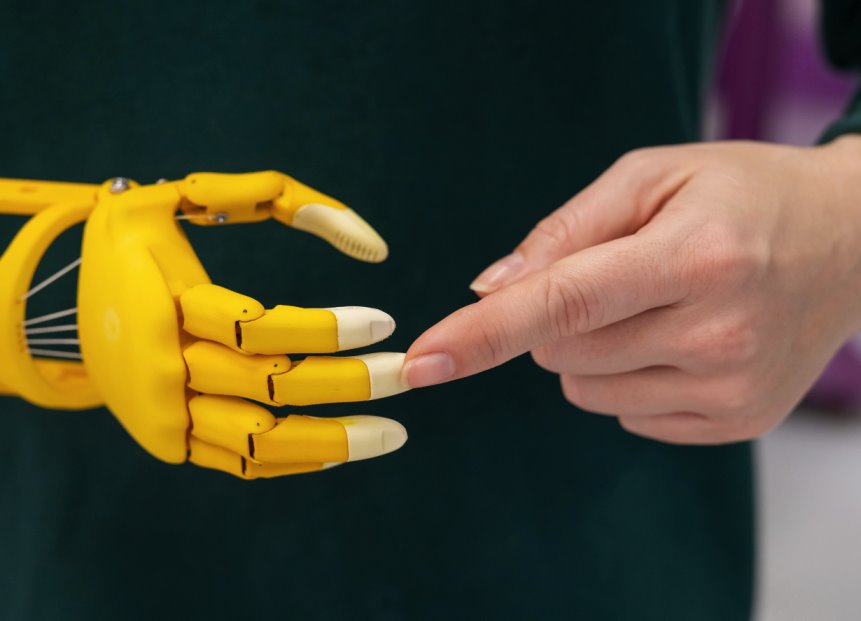New Prosthetic Technologies for Amputation Injuries from Work-Related Accidents
September 19, 2023 | Workers' compensation
Employers have an obligation to provide workers with a safe working environment. While many employers take steps to ensure the safety of their workers, accidents still do happen. When workplace accidents occur, employers are required to pay their workers compensation through worker’s compensation insurance.
Does Workers Compensation Cover the Cost of Prosthetics
Workers compensation insurance is designed to provide workers with a financial cushion in the event of an accident. Workers compensation benefits cover the costs of medical treatment as well as part of the worker’s wages for the period that they are not able to work. The specific benefits you are eligible to recover through workers compensation depend on various factors including the severity of your injury.
If you have lost a limb as a result of a workplace injury, you may be able to recover benefits to cover the cost of prosthetics. Workers compensation benefits offer cover for medical expenses. For amputees, this includes the care and services involved in fitting prosthetic devices and learning to use them. They may also cover the cost of having to replace the device later. The insurance company should pay all reasonable costs to help you regain as much function as possible.
However, not all amputees are able to benefit from workers compensation. It is vital that you speak with an experienced workman’s compensation attorney. Your attorney will fight to ensure that you are compensated fully for your injuries.
Prosthetic Technologies Available for Amputation Injuries from Work-Related Accidents
Prosthetic technology has advanced a great deal over the past few years. There is now a wide range of options available for individuals that have suffered amputation injuries. Some prosthetics are even able to restore a great deal of functionality and thus some workers are able to return to gainful activities. Below, we highlight some of notable technologies and developments for amputation accident victims.
- Myoeletric prosthetics
These types of limbs are controlled by electric signals that are generated by the muscles in the residual limb, hence the name myoelectric. They are therefore suitable for amputees who have not lost their entire limb. The remaining muscles are used to control the prosthetic device. Electrodes are placed on the skin or implanted in the muscles to detect the signals from the muscles. The signals are translated into movements in the prosthetic limb. These types of prosthetics offer the benefit of providing more natural and intuitive control.
- Osseointegration limb replacement
This involves the permanent implantation of an artificial implant into the bone. The bone grows around the implant and anchors it securely through a process known as osseointegration. A prosthetic limb can then be attached to the implant. The implant provides greater stability for the prosthetic limb. It eliminates the need for a socket. These types of implant offer greater comfort and mobility for amputation injury victims.
- Bionic Limbs
These are prosthetic limbs that are designed to look and function like the natural limb that they are replacing. These limbs mimic natural movements as closely as possible. They incorporate various types of advanced technologies including motors and sophisticated control systems. They are also often made from advanced materials in order to mimic natural limbs. Some models even offer sensory feedback for the user. This allows users to have a sense of pressure, temperature changes and much more. These prosthetics are highly advanced and therefore can be very expensive.
- Exoskeletons
These types of prosthetics are commonly used by those that have suffered lower limb amputations. They are different from traditional prosthetics as they are powered to provide additional assistance in standing, walking and other movements. This reduces the amount of effort that the user needs to exert. Some exoskeletons are designed specifically to assist with rehabilitation others are designed to provide mobility assistance.
- Cosmetic prosthetics
Prosthetics aren’t just about restoring function. There are some prosthetics that are designed to help maintain a natural appearance. For example, an amputee may feel self-conscious about missing a finger. A cosmetic prosthetic that looks just like the finger they lost can be fitted to restore the natural appearance of the hand and thus boost the amputee’s confidence. These prostheses can be designed to match the natural skin tone, texture and contours of the amputee’s limb.
Prostheses have advanced over the years due to advancements in technology in different areas. Some notable advancements driving the development of new prostheses include machine learning and artificial intelligence, the development of microprocessors and sensors, 3D printing and the development of new materials such as carbon fiber, which provide better performance.
If you have suffered an amputation in a work-related incident, you may be able to access prostheses through workers compensation benefits. Get in touch with our law firm to discuss your case with an attorney and learn about your rights and options.

New Prosthetic Technologies for Amputation Injuries

